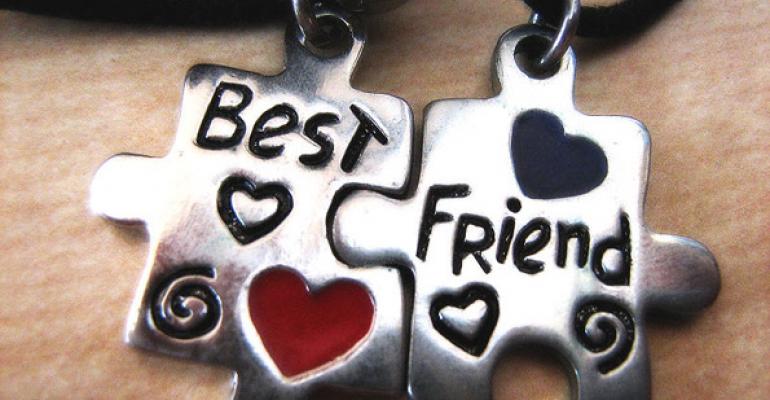If you choose to work as a professional in trusts and estates or private wealth management, you have an opportunity to get to know the lives of your clients in intimate detail. Not only are you privy to information on their bank accounts, and life goals, but also, you’ll inevitably learn about family relationships in all their glorious, and sometimes gory, detail. Anyone who underestimates how complex this position can be is likely to be surprised, and not always for the better. While many see their clients as their “friends,” still others seem to place their clients in the position of “foe.” I’ve found that either stance can be detrimental to clients, as well as for advisors. Somewhere in the middle, with a bit more clarity, is probably better for both. In this Building Bridges column, I explore some of these complexities of the client/advisor relationship.
BFFs
It’s not hard to see how clients can become close friends. If you’re the lawyer doing their estate plan or an accountant recording their income every year, you’ll get to know their lives in details that their closest friends and even family members may not. If you’re like most professionals in the field, you were drawn to this work because you genuinely care about helping people and value personal relationships. Over time, it’s only logical that you’ll develop close relationships with some of your clients. You like them, they like you. This bond can be especially helpful in pursuing your goals to help them achieve theirs. And, yet, the closer you get, the harder it can be to remain objective.
It can become quite difficult to separate one’s personal feelings out from the advice that a client may need to hear from you. You may also find yourself in the awkward position of being invited still further into your clients’ lives as a friend in addition to as their advisor. Traditionally, the ethical rules governing lawyer/client relationships provided a useful set of boundaries that applied to lawyers and could guide others in the field. However, the industry is changing, and it’s harder to see where the line is drawn for investment advisors or others, such as family office executives. I’ve seen these issues arise with greater frequency lately, with colleagues faced with questions such as: Do you use a client’s home that he’s offered you when he’s out of town? Join clients on their yacht for a weekend away? There are even more difficult questions: What happens if a business matter comes up during your personal time together? How much do you reveal about your own life? It’s tough to be friends with a client, though it seems natural to do so. Yet, you wouldn't expect a therapist to vacation with a client, even though sometimes the information you receive from the client is just as personal. Role clarification is complicated, yet worthy of serious reflection.
Frenemies
I’ve also witnessed the challenge of the other stance - that is, advisors who, knowingly or not, hold some level of disdain for their clients. While rarely is the stance so extreme, there are times when an advisor has difficulty maintaining compassion or empathy for a client’s situation. On one conference call, I heard lawyers refer to clients as “little beaks coming to the nest” (these were adult beneficiaries seeking distributions from multi-generational trusts). On another, grown family members were referred to as “children who just wouldn’t grow up.” Clients can feel these vibes, making it still harder for the advisor to provide the best advice that they might have to offer. Advisors must be honest with themselves about how they feel about their clients and examine whether their advice might be hindered by negative emotions.
Middle Ground
Professional ethical standards are a good starting point for guidance on how to navigate the human and emotional complexity of the client-advisor relationship. In addition, I would argue that the best stance is one closer to the middle than the two extremes outlined above. I’ve found that genuinely caring about the client’s welfare and expressing that in a “friendly” way, can certainly help the client-advisor relationship, so long as the advisor understands where the lines ought to be drawn. On the other side, an advisor probably can’t be effective professionally if she holds the in disdain. It’s the advisor’s duty to stay aware of when the relationship has gotten too close or if the distance has gotten too far apart. If either situation arises, it might be best if the advisor could have an “it's not you, it’s me” conversation to either set the relationship on a more balanced course or end the professional relationship graciously. Either way, the advisor should consider what’s best for the client.






